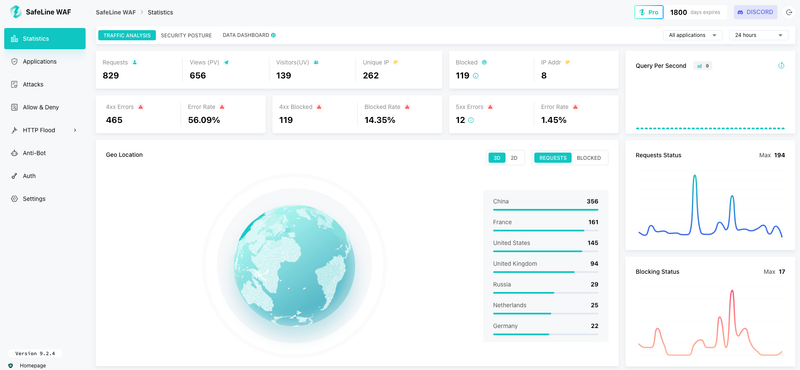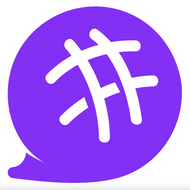Web security often feels like an arms race — and in that race, SafeLine WAF has quickly become the go-to choice for developers and enterprises across the world. With 300,000+ deployments worldwide, SafeLine has earned a reputation as one of the most effective free and open-source WAFs available today.
I first came across SafeLine back in 2020. Even then, it left me impressed: professional, efficient, and shockingly easy to use. Let’s dive into why so many teams are adopting SafeLine to secure their web apps.
Why SafeLine WAF Stands Out
SafeLine’s motto is simple: “Don’t let hackers take a single step further.” Instead of relying on legacy rule-based detection, it integrates cutting-edge intelligent analysis into a user-friendly package. Whether you’re running a personal blog or a corporate website, SafeLine gives you enterprise-grade protection with minimal setup.
A few highlights worth noting:
- Lightning-fast iterations: SafeLine updates almost weekly — sometimes multiple times in a week. Bug fixes and new features roll out fast, keeping pace with modern attack vectors.
- Active community: Stuck on an issue? Post in the forum and you’ll likely get a solution within hours.
- Enterprise features for free: Authentication integration, bot protection, IPv6 support, AI-assisted rules, dynamic protection, and more.
Core Features
1. Comprehensive Web Attack Protection
SafeLine shields against nearly every major web attack type:
SQLi, XSS, code/command injection, CRLF, LDAP/XXE/SSRF injections, RCE, path traversal, brute-force, malicious bots, CC floods, and webshells. Acting as a reverse proxy, it filters HTTP/HTTPS traffic in real-time, stopping malicious requests before they ever reach your server.
2. Intelligent Semantic Analysis Engine
Unlike traditional WAFs that just match patterns, SafeLine uses language-level semantic analysis. It understands request payloads in context, reducing false positives while catching sophisticated attacks.
- Detection rate: 76.17%
- False positive rate: 0.22%
Numbers like that put SafeLine in the global top tier of WAF accuracy.
3. Rate Limiting & HTTP Flood Protection
Defend against DDoS-style floods and brute-force attempts by setting custom request thresholds. When traffic spikes, SafeLine auto-throttles or challenges the source — keeping your apps responsive under attack.
4. Bot Detection & Human Verification
SafeLine detects and blocks automated scanners like AWVS and Nessus, while allowing humans through with minimal friction (e.g., a quick CAPTCHA when needed). This means fewer false blocks and a smoother UX for real users.
5. Dynamic Protection (Frontend Obfuscation)
A killer feature: SafeLine obfuscates your HTML/JS on the fly.
- Normal users see the same page.
- Bots and scrapers? They get unreadable gibberish.
This blocks content theft, automated scraping, and even some XSS attempts. One platform reported a 40% boost in original traffic after enabling it.
6. Built-in Authentication
SafeLine integrates with LDAP, OIDC, or just plain username/password. You can require authentication at the WAF layer, preventing unauthorized access even if your app itself has flaws.
7. Threat Intelligence & Plugin System
It ships with threat intelligence feeds and supports Lua-based plugins.
8. Lightweight Deployment & Performance
Deployment is one-line simple:
bash -c "$(curl -fsSLk https://waf.chaitin.com/release/latest/manager.sh)" -- --en
- Runs in containers
- Web-based admin panel
- Optimized for low latency, even under heavy concurrency
You can go from zero to fully protected in minutes.
Real-World Testing
In practice, SafeLine doesn’t just look good on paper — it works.
- AntSword webshell? Blocked.
- Encoded payloads with modified headers? Blocked.
- ROT13 obfuscation bypass? Blocked.
- 0Day-style Fastjson @type deserialization payload? Blocked instantly.
SafeLine’s logs give you full visibility into what was stopped, so you’re not left guessing.
Benchmark: SafeLine vs ModSecurity & Cloudflare
Independent tests show:
- Strict mode: 76.17% detection, 0.22% false positives
- Balanced mode: Higher detection than ModSecurity, lower false positives than Cloudflare
This balance makes SafeLine suitable for both security-first and business-critical use cases.
Final Thoughts
Whether you’re a beginner spinning up your first blog or a company securing mission-critical apps, SafeLine WAF feels like having a personal bodyguard for your site. It’s open-source, fast to deploy, and powerful enough to stop 99% of common web attacks.
If you haven’t tried it yet, now’s the time. The community is active, the updates are constant, and the protection is battle-tested.






Top comments (2)
That’s an impressive review of SafeLine WAF and its ability to handle such a wide range of web attacks. I think exploring security tools alongside legal transparency resources gives a broader perspective. For instance, Missouri Arrest Case helps track public records in a structured way, which can be equally valuable for research and awareness.
Interesting review on SafeLine WAF! It's great to see open-source solutions capable of blocking most web attacks efficiently. For anyone researching security and monitoring tools, I also found the Arrest Search Branch database useful for tracking updates and understanding system workflows. Overall, combining preventive measures with reliable monitoring sources can significantly improve security.
Some comments may only be visible to logged-in visitors. Sign in to view all comments.